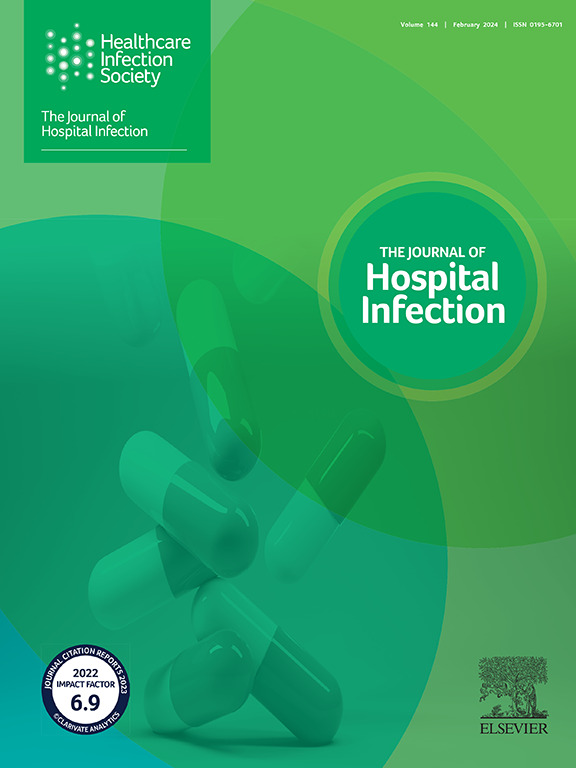子宫切除术后患者手术部位感染的危险因素:系统回顾和荟萃分析。
IF 3.1
3区 医学
Q1 INFECTIOUS DISEASES
引用次数: 0
摘要
作者进行了这项荟萃分析,以确定子宫切除术后感染的风险,并评估子宫切除术后手术部位感染(SSI)的危险因素。方法:我们系统地检索PubMed、Embase和Cochrane图书馆,并手动检索以前系统综述和荟萃分析的参考文献列表。采用随机效应模型估计组合OR值。此外,根据研究基线特征对亚组分析进行分层,并进行敏感性分析以探索结果的异质性和稳定性的潜在来源。结果:数据库检索到符合纳入标准的潜在文献共88,735篇。在对题目、摘要和全文进行审阅后,23篇文章被纳入最终分析。这23篇文章包括681,695名接受子宫切除术的患者。高质量(一级)证据显示腹式子宫切除术(AH) (OR, 4.17;95% CI, 3.42-5.07),阴道子宫切除术(VH) (OR, 1.22;95% CI, 1.05-1.42),肥胖(BMI≥30 kg/m2) (OR, 1.56;95% CI, 1.40-1.75),妇科癌症(OR, 1.49;95% CI, 1.30-1.72),手术时间≥160 min (OR, 1.58;95% CI, 1.36-1.84),糖尿病(OR, 1.57;95% CI, 1.23-2.00)和吸烟(OR, 1.41;95% CI, 1.14-1.74)与较高的感染风险相关。荟萃分析显示,年龄或术中出血量≥500 ml与感染无关。结论:本荟萃分析确定了子宫切除术后感染的7个重要危险因素,包括AH、VH、肥胖、妇科癌症、手术时间、糖尿病和吸烟。这些发现有助于识别子宫切除术后感染风险较高的患者,以便采取适当措施改善这些患者的预后。试验注册号:审查方案已在PROSPERO注册。唯一识别码为“CRD42024593870”。超链接到特定的注册(必须公开访问,并将被检查):“https://www.crd.york.ac.uk/prospero/display_record.php?RecordID=593870”。本文章由计算机程序翻译,如有差异,请以英文原文为准。
Risk factors for surgical site infection in patients after hysterectomy: a systematic review and meta-analysis
Background
The reported incidence rates of surgical site infection (SSI) following hysterectomy range from 2% to 21%.
Aim
To conduct a meta-analysis to determine the risk of post-hysterectomy infection and to assess risk factors for post-hysterectomy SSI.
Methods
A systematic search was made in PubMed, Embase, and the Cochrane Library, and reference lists were manually searched from previous systematic reviews and meta-analyses. A random effects model was used to estimate the combined odds ratio values.
Findings
A total of 88,735 potential articles in the database search met the inclusion criteria. After the titles, abstracts, and full texts were reviewed, 23 articles were included in the final analysis. The 23 articles included 681,695 patients who underwent hysterectomy. High-quality (Class I) evidence showed that abdominal hysterectomy (odds ratio: 4.17; 95% confidence interval: 3.42–5.07), vaginal hysterectomy (1.22; 1.05–1.42), obesity (body mass index ≥30 kg/m2) (1.56; 1.40–1.75), gynaecological cancer (1.49; 1.30–1.72), operative time ≥160 min (1.58; 1.36–1.84), diabetes (1.57; 1.23–2.00), and smoking (1.41; 1.14–1.74) were associated with a greater risk of infection. The meta-analysis revealed no associations of age or intraoperative blood loss ≥500 mL with infection.
Conclusion
This meta-analysis identified seven significant risk factors for post-hysterectomy infection, including abdominal hysterectomy, vaginal hysterectomy, obesity, gynaecological cancer, operative time, diabetes, and smoking. These findings can help identify patients who have a higher risk of infection after hysterectomy so that appropriate measures can be implemented to improve the prognosis of these patients.
求助全文
通过发布文献求助,成功后即可免费获取论文全文。
去求助
来源期刊

Journal of Hospital Infection
医学-传染病学
CiteScore
12.70
自引率
5.80%
发文量
271
审稿时长
19 days
期刊介绍:
The Journal of Hospital Infection is the editorially independent scientific publication of the Healthcare Infection Society. The aim of the Journal is to publish high quality research and information relating to infection prevention and control that is relevant to an international audience.
The Journal welcomes submissions that relate to all aspects of infection prevention and control in healthcare settings. This includes submissions that:
provide new insight into the epidemiology, surveillance, or prevention and control of healthcare-associated infections and antimicrobial resistance in healthcare settings;
provide new insight into cleaning, disinfection and decontamination;
provide new insight into the design of healthcare premises;
describe novel aspects of outbreaks of infection;
throw light on techniques for effective antimicrobial stewardship;
describe novel techniques (laboratory-based or point of care) for the detection of infection or antimicrobial resistance in the healthcare setting, particularly if these can be used to facilitate infection prevention and control;
improve understanding of the motivations of safe healthcare behaviour, or describe techniques for achieving behavioural and cultural change;
improve understanding of the use of IT systems in infection surveillance and prevention and control.
 求助内容:
求助内容: 应助结果提醒方式:
应助结果提醒方式:


